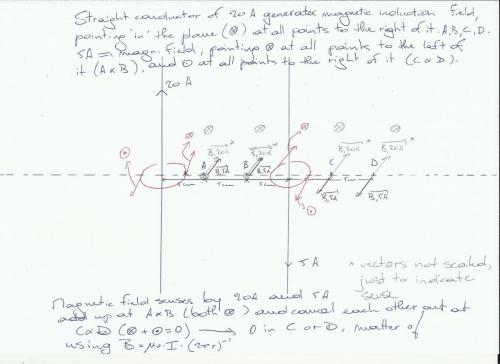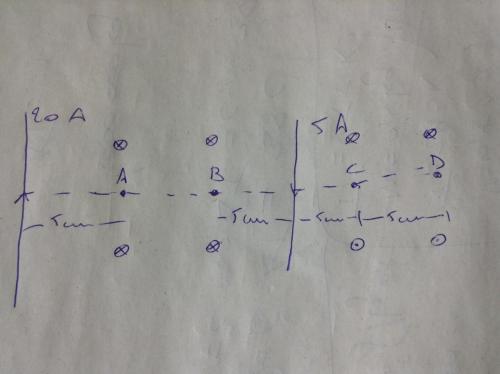-
Posts
926 -
Joined
-
Last visited
Content Type
Profiles
Forums
Events
Everything posted by Function
-
Hello everyone In a dissertation for maths, I've mentioned once "quadratrix"... Can't really explain what it is, but I think I know what it is, and I've discovered what seems to be a pretty beautiful property of the quadratrix of a circle (commonly known as the quadratrix of Dinostratus) So I thought: what if I 'completed' the quadratrix? (i.e. completing the circle and the quadratrix, resulting in a horizontal flip of the quadratrix over x=0, a vertical one over y=0, and a horizontal one of the vertically flipped one over x=0) The result: an eye-shaped geometrical figure. If you're eager to see this 'completed' quadratrix, you can ask me and I will try to upload it somewhere (.ggb, to be opened with GeoGebra). In this file, I've also drawed what I like to call 'sub-quadratrices' (the blue lines). My conclusion of doing this: if the number of equal parts (now there are 10, for more information, seek information on the quadratrix of Dinostratus) are going to infinity, you become this eye-shaped figure; the less equal parts you have, the more you will get like 2 strange flower petals above and under y=0, with the eye-shaped 'fulfilled' quadratrix around it (touching it at the extreme values ( (0,r) and (0,-r) with r the radius of the circle). And then I thought: this figure I 'made' is so special, so unique per radius of the circle, that it must have some special properties. First thing I thought of, was the area. So then I started playing with the numbers I had: Let A be the area of this fulfilled quadratrix. In the file (i.e. for r = 10), A = 175.8804176 Note that this won't be the exact area of the fulfilled quadratrix, for it's only measured with 10 equal parts the quadratrix is based on... The area of the circle (i.e. for r = 10) = 314.1592654 Dividing the latter area by the former results in 1.786209458 = B Dividing [math]\pi[/math] by this number results in 1.758804176 = C The square root of [math]\pi[/math] is 1.772453851 Then I thought that this square root is about the mean of B and C: (B+C)/2 = 1.772506817 Not such a big difference, right? And then I thought: if this is right, I should be able to find a nice formula to express the area of the fulfilled quadratrix in function of r: [math]\frac{\left(\frac{r^2\pi}{A}+\frac{A\pi}{r^2\pi}\right)}{2}=\sqrt{\pi}[/math] [math]\Leftrightarrow \frac{r^4\pi+A^2}{2Ar^2}=\sqrt{\pi}[/math] [math]\Leftrightarrow 2Ar^2\sqrt{\pi}=r^4\pi+A^2[/math] [math]\Leftrightarrow A^2-2Ar^2\sqrt{\pi}+r^4\pi=0[/math] Giving a discriminant of 0 and a final result of [math]A=\sqrt{\pi}r^2[/math]. Nice enough, in my opinion. It's always possible that I'm not right, but, in my opinion, it's very beautiful that this discriminant is 0, so that must mean something! Can someone tell me whether I'm right or not? Can't find any appropriate information on the internet.. Are there other special properties the (fulfilled) quadratrix has? Thanks! Function
-
Hello everyone I discovered something amazing: physics in daily life; more specific: electromagnetism. So I took the plug of my pc speakers (10V, 0.5A, 50/60Hz), put the volume on the maximum, and experienced first of all that the speakers emitted a sound when the plug was touching my hand. If I took my hand very close to the keyboard of my laptop, another sound was emitted. If I put my hand on my microscope (plugged in, 5V, 1A), another sound. My desk lamp of 11W, 230V caused the loudest sound. When I touch the lamp, but not the plug, another, very weak sound, gets louder when I close in to the plug with my other hand. This is rather logic, to me: B is proportional to I, so it's logic that the lamp causes a louder sound. Now this, I find strange: The sound is louder when I touch the plug and bring my hand near the lamp, than when I directly bring the plug close to the lamp. Can someone tell me why it makes sound when I just touch the plug? Is it because I'm sitting in some sort of magnetic field? Can someone also explain to me the thing I find strange? Does this actually have anything to do with magnetic field? Thanks! Function
-
My physics teacher had explained to me why it is so, and now I understand it. Here's the explanation:
-
vampares Note that I'm in my last year of high school, about to participate in the approval exam for med school. Nothing was meant to be as complicated as you make it. Assume that the alleles A(a) and B(b) are on the same chromosome. Let AaBb be the genotype of the first organism. Possible gametes are AB, Ab, aB and ab. Which of those are recombinant and which are not? [math]x[/math] is just a random, even number between 0 and 100, expressing the recombinant frequency, expressed in percentage or centimorgan. I just called it [math]x[/math] because I was tired of always using the same "20 cM"
-
Forgive me my behaviour, which might seem arrogant, but what you say is irrelevant to my question: I'd like to know which one of the possible gametes of organism 1: AB, Ab, aB, ab; are recombinant, and also for organism 2: aB, ab, aB, ab to decide the chance of getting one of the genotypes in the table I gave in #1. What you say is undoubtedly very interesting, but has little to do with my question, as far as I'm aware of.
-
[math]2x \; cM[/math] is [math]2x[/math] centimorgans, or a recombination frequency of [math](2x)\%[/math]. This means that there is a chance of [math]x\%[/math] per recombinant allele to 'exist' as a consequence of crossing-over. I'd just like to know which allele is recombinant and which is not.
-
Hello everyone This would be my very last question concerning genetics. Imagine a crossing of an organism with genotype AaBb, and an organism with organism aaBb. Between the alleles A(a) and B(b) is a distance of [math]2x\; cM[/math]. What is the chance of getting an organism with genotype Aabb? [math]\begin{tabular}{|c||c|c|c|c|}\hline & AB & Ab & aB & ab \\ \hline\hline aB & AaBB & AaBb & aaBB & aaBb \\ \hline ab & AaBb & Aabb & aaBb & aabb \\ \hline aB & AaBB & AaBb & aaBB & aaBb \\ \hline ab & AaBb & Aabb & aaBb & aabb \\ \hline \end{tabular}[/math] Now, in order to solve the question, I have to know which of the alleles of both organisms are recombinant. How can I do this? Thanks! Function
-
Ah yes. Very well. Thank you. I will try to remmeber this for the exam.
-
Hello Another question of my med school approval exam: (Really don't know how to begin this one) A fish swims 80 cm below surface. The breaking index of water is 1.33. The depth at which a person who looks perpendicular on to the water, right above the fish, sees this fish is A. 33 cm B. 60 cm C. 75 cm D. 107 cm --- So I began with Snell's law: [math]n_1\cdot\sin{\theta_1}=n_2\cdot\sin{\theta_2}[/math] [math]\Leftrightarrow -1=1.33\cdot\sin{\theta_2}[/math] [math]\Leftrightarrow\sin{\theta_2}\approx -\frac{3}{4}[/math] So [math]\theta_2 \approx 50^{\circ}[/math] But I don't know if I am something with this? Could someone help me on this one? I might think that I could pick the point (0;-0.8) and rotate this over an angle 90°-arcsin(-3/4) until it hits the refracted 'light ray'? Thanks. F.
-
Ah, very well then, the energy that the ball loses and thus the energy the oil receives is 0.025 kg * 10 ms-2 * (-0.4) m = -0.100 J? But then the problem is that you say that "Since the oil does no work, we can call the energy it receives, by way of work done on it, negative work." So the "work" done by the oil should be the opposite, thus 0.100 J? If this is not the case, and 0.100 J is the amount of energy received by the oil, I'd say that W = E1-E2 = 0 J - 0.100 J = -0.100 J It's getting rather complicated now, and I think I'll just stick with forces: it is still the frictional work, done by the oil which is asked... It seems best to me just to work with frictional force then, and distance
-
Oh dear, those are a lot of English scientifical words I see how they are additive etc. and two inverse senses will cancel each other out, but do you have any idea what the meaning is of the crosses and the points under and above A, B, C and D? Because I don't really believe those are conductors? I'd say it has something to do with the distance from C and D to both the conductor with 20 A and the one with 5 A, but it doesn't make sense to me why the 'things', whether they are conductors or magnetic field lines, above and under C (and D) are opposite to each other? Notice that, and I might've wanted to say this earlier, originally, only the 2 straight conductors, current and the dot line were given, not the crosses and dots! So this professor solved this exercise by putting these herself in this drawing. Why and how, however, is still not clear to me. (& aren't your mistaken in the direction of the arrows in the magnetic field around your 5 A-conductor?)
-
Ah yes.. So, cosine is actually more to calculate the magnitude of W, whereas vectorial product is used to define the sense of W?
-
Those are straight conductors I don't think the cross and point represent conductors, but the sense of the magnetical induction field (don't know if that's the same as magnetic field) Believe me, the diagram isn't clear to me, either! The professor just mentioned something about: here 'it' (whereof I assume she meant the sense of the magnetical field) points in the plane, here out of the plane, ... What the page literally says: "MAGNETIC FIELD AS A CONSEQUENCE OF A CURRENT-CARRYING WIRE Magnetic field: [math]\left|\overrightarrow{B}\right|=\frac{\mu_0\cdot I}{2\pi r}[/math] Unit magnetic field: [math]1\;T=1\frac{N}{Am}[/math] [DRAWING OF THE RULE OF THE RIGHT HANDGRIP (relation sense B and I)] [DIAGRAM] The magnetic induction field is zero in A B C D"
-
Ah, but of course! [math]W=F\cdot\Delta x\cdot \cos{\theta}[/math] In casu: [math]W=F\cdot\Delta x\cdot\cos{180°}=-F\cdot\Delta x[/math] How could I forget that Is that cosine the key issue here? That I forgot that? Or should [math]\Delta x[/math] also be a vector, instead of just a scalar?
-
Hmm... But the force, and thus also the work, of the oil would be pointed upwards, whereas the one of the ball would be downwards; considering 'up' as positive, the force, and thus also the work of the oil should be positive, as is my answer?
-
Hello In my papers in preparation for the med school approval exam, there's an exercise I don't really understand: the professor who solved the exercise, failed to explain why the magnetic induction at the top of A is, as it is in the bottom, pointed in the plane of the paper (cross), same for B, and why it is pointed out of the paper under points C and D. (see drawing) Asked is the point in which the magnetic induction is zero. I do understand that both conductors give the same magnitude of induction in C (which is the answer) but I don't get why the directions are opposed. Could someone please clarify this to me? Thanks.
-
Hello A question in preparation of my med school approval exam: "A small ball with a mass of 25 g falls with a constant velocity of 0.1 ms-1 in oil. The frictional work, done by the oil if the ball has dropped 40 cm into the oil, is: A. 0.100 J B. 0.000125 J C. -0.100 J D. -0.000125 J --- Here's how I'd like to solve this: According to Newton's second law: [math]\sum{\overrightarrow{F}}=m\cdot \overrightarrow{a}[/math] Since the ball travels with a constant velocity, [math]a[/math] and thus [math]\sum{\overrightarrow{F}}[/math] must be 0. As far as I'm aware of, there're only 2 forces influencing the ball: gravitational force [math]\overrightarrow{F_z}[/math] ("z" for "zwaartekracht", Dutch for "gravitational force") and frictional force [math]\overrightarrow{F_w}[/math] ("w" for "wrijving", Dutch for "friction"): [math]\begin{array}{rccl}& \overrightarrow{F_w} & = & -\overrightarrow{F_z}\\ \Leftrightarrow & \overrightarrow{F_w}&=&-m\cdot\overrightarrow{g}\\ & \overrightarrow{W_w}&=&\overrightarrow{F_w}\cdot\Delta x \\ \Leftrightarrow&\overrightarrow{W_w}&=&-m\cdot\overrightarrow{g}\cdot\Delta x\\ \Leftrightarrow & \left|\overrightarrow{W_w}\right|&=&-m\cdot\left|\overrightarrow{g}\right|\cdot\Delta x\\ \Leftrightarrow & W_w & = & m\cdot g\cdot\Delta x\\ \Leftrightarrow & W_w&\approx & 0.025\; kg\cdot 10\; ms^{-2}\cdot 0.4\; m\\ \Leftrightarrow & W_w & \approx & 0.100\; J\end{array}[/math] (Mind the approximation of [math]\left| g\right|[/math]: no calculators are allowed on the exam) This is what I'd pick: answer A. I'm afraid, though, it's a bit too.. logic. Could someone review this please? Thanks. Function
-
The feeling is the phenomenon and occurs, so I found out, with most small objects I was afraid you'd say something like that... Sounds a bit like I'm getting mental I think it'd be very interesting getting a ct-scan or mri while trying to trigger this phenomenon, whether it's psychosomatic or not. Now, I must confess that I have experienced this also, occasionally (rather rare, actually), in bed, just trying to sleep, when nothing is near my forehead.
-
Hmm.. I start doubting: If the recombination frequence is, let's say 20 cM, and in the mendelian, ideal square, 4/16 is not recombinant (e.g. crossing of GgVv x GgVv), so 12/16 is recombinant, then is the total chance to get Ggvv 20%*1/12 or 20%*1/16?
-
So, actually, this is my reasoning: Of all F1-products, 18% is recombinant (something else than RRgg and rrGg) Of all recombinants (since Mendel is in casu only having recombinants), 50% is what's being asked. The total amount of what's being asked is thus 18%*50% = 9%. But, let's imagine the crossing of AaBb x AaBb, with a distance between A/a and B/b of 20 cM. Mendelian genetics: AABB: 1/16 AABb: 2/16 AaBB: 2/16 AaBb: 4/16 AAbb: 1/16 Aabb: 2/16 aaBB: 1/16 aaBb: 2/16 aabb: 1/16 --- Now, you'd like to know how big the chance is to get, for example, Aabb, which is a recombinant. On first sight, I'd say 2/16 * 20% = 12,8%*20% = 2,56% But, in this Mendelian genetics, 4/16 is not recombinant! Do we have to take this into account? So there are 16 F1-products, of which 12 recombinant. Of this 12, 2 have the asked genotype (Aabb) So on second sight, I'd say 2/12 * 20% = 3,33% 1) Which is the correct one? --- 2) Is it, by the way, correct, that the total chance of getting a recombinant genotype, is 12/16 * 20% = 15%? --- 3) But then, what's the chance to get a non-recombinant genotype (i.e. AaBb)? Is it just 80%? For there are 12 recombinants, of which 12 recombinant (you wouldn't say this, huh? ), so, as we stated, 12/12 * 20% = 20% recombinant, so 80% must be non-recombinant? --- Thank you in advance for helping me understand genetics as I have to get it
-
Hello everyone This is probably my last question concerning genetics. It's a question about recombination frequence, and thus also the centimorgan (cM). Given out of my book for preparation on the acceptance exam most of you probably already know the existance of: "With tomatos, a red colour is dominant over a yellow colour. The allele for a big plant is dominant over that for a small plant. A farmer wants to optimalize his harvest. In the future, he'd like to get only plants that are both big and produce red tomatos. He asks you to do a test-experiment on his land. He gives you a seed that is the result of the crossing of a small plant of pure race for red tomatos with a big plant with yellow tomatos. Of this last plant, he's sure that it's the result of a big plant and a small plant, both of pure race. You decide to perform a testcross as first experiment. If you know that the genes for the colour and size are on the same, autosome on a distance of 18 cM, then what is, after your testcross, the percentage of big plants with red tomatos?" (Sorry if there're lots of mistakes in this text, I translated it quickly) Now, I know the answer is 9%. On first sight, I'd just say 18%, which is wrong, so I started wondering how I could get to 9%. So I drew a square for dihybride crossing: RRgg x rrGg. In this square, I could see that 1/2 of all possibilities, working with mendelian genetics, are big plants with red tomatos (RrGg) (pretty logic: RR x rr always gives Rr and Gg x gg gives in 1/2 of all cases Gg). And then I started reasoning: Mendel assumed that 100%*1/2 of all F1 are RrGg, but he didn't bring the distance between genes into account. 1/2*18cM = 9cM = 9% = the correct answer. Is this way to solve it the correct way? In other words; is this correct: [math]P(X)=P(X_{\text{mendelian genetics}})\cdot (\text{distance between the two alleles resulting in X})[/math] Thanks. Ta-ta Function P.S. Could anyone of the moderator team please change the title to "Morgan's genetics: the cM"? Thanks.
-
One more thing, just to be sure: Imagine a recessive, X-linked disease. Father is carrier of the allele, and must thus be sick. Mother is not carrier of the allele. Conclusion: all the daughters are carriers of the allele, and none of the sons are, and none of the children is affected by the recessive disease. Reasoning: XDXD + XdYD = XDXd, XDXd, XDYD, XDYD With (X/Y)D a sex-chromosome without the disease causing allele, and Xd an X-chromosome with the disease causing allele. Healthy dominates sick, so none has the disease, but 2/4 are carriers. Correct?
-
Ah, wonderful. I think I get it +2 Thanks!
-
I'm afraid I still don't really get it. Why do you suddenly bring in a great-grandmother? I thought it was just the grandmother who has two copies of this recessive disease-allele? And nothing is given of grandmother's brother. He's not in this family tree. Perhaps you mean mother's brother? If this is the case, I think I get it: uncle gets one of the two affected X-chromosomes of grandmother, so should have the disease (I just accepted this; is the Y-chromosome not affecting the result, even when it doesn't carry the recessive-disease-causing allele? I mean, will a X-linked disease always affect a male when his mother has two copies of the causing allele, even when he has a completely healthy father, resulting in chromosomes XdYD? (Xd is X-chromosome with causing allele, YD is Y-chromosome with no causing allele)), but he hasn't, so the disease is not X-linked but autosomal?




